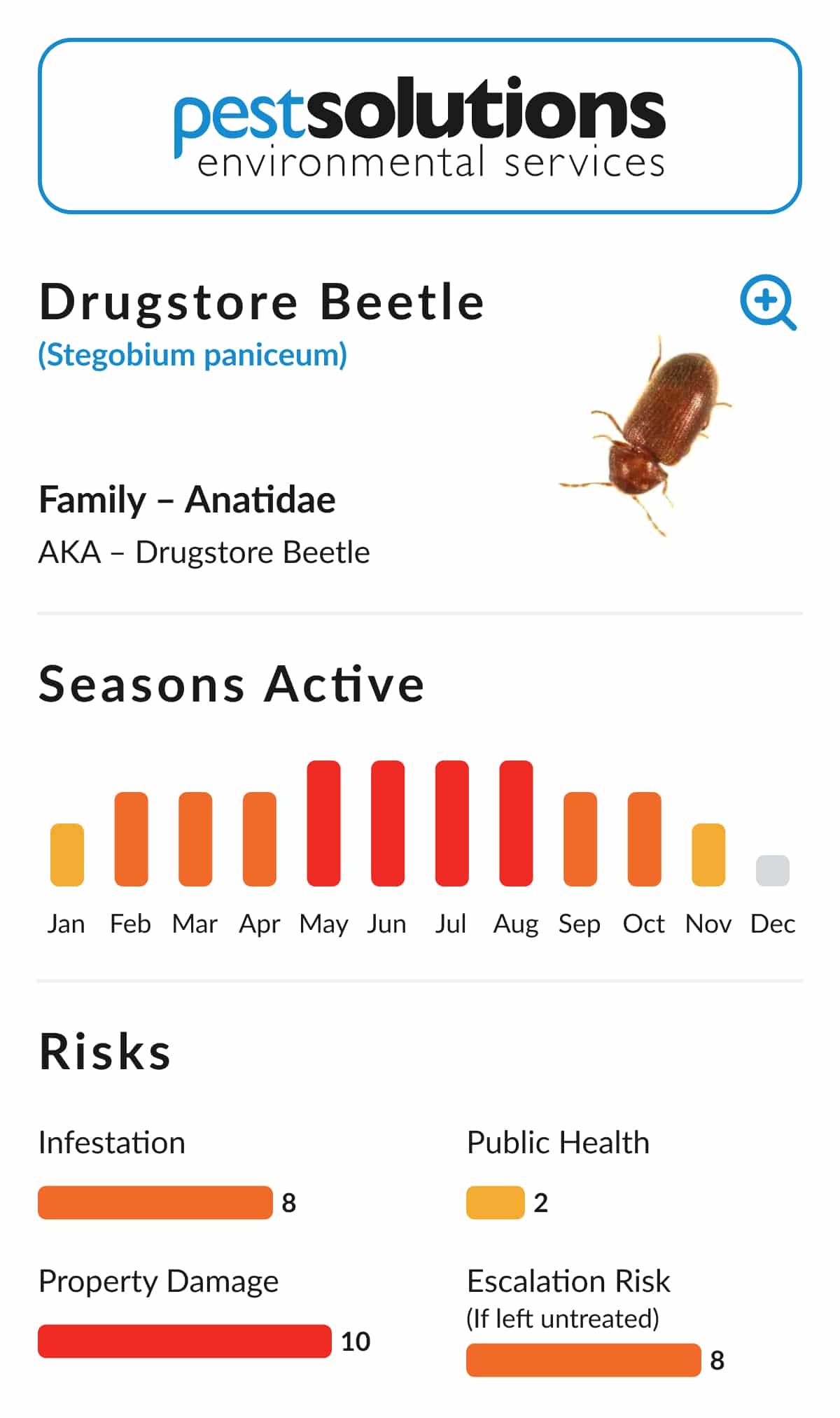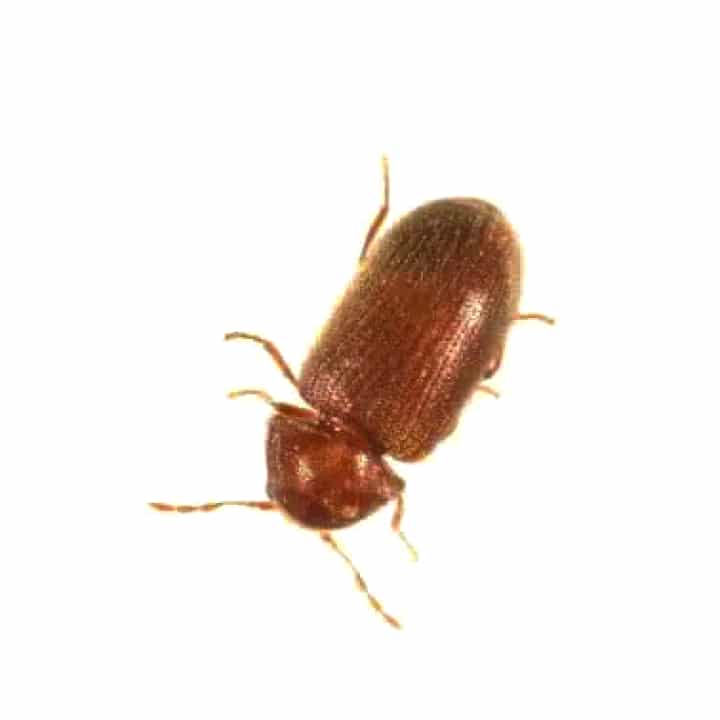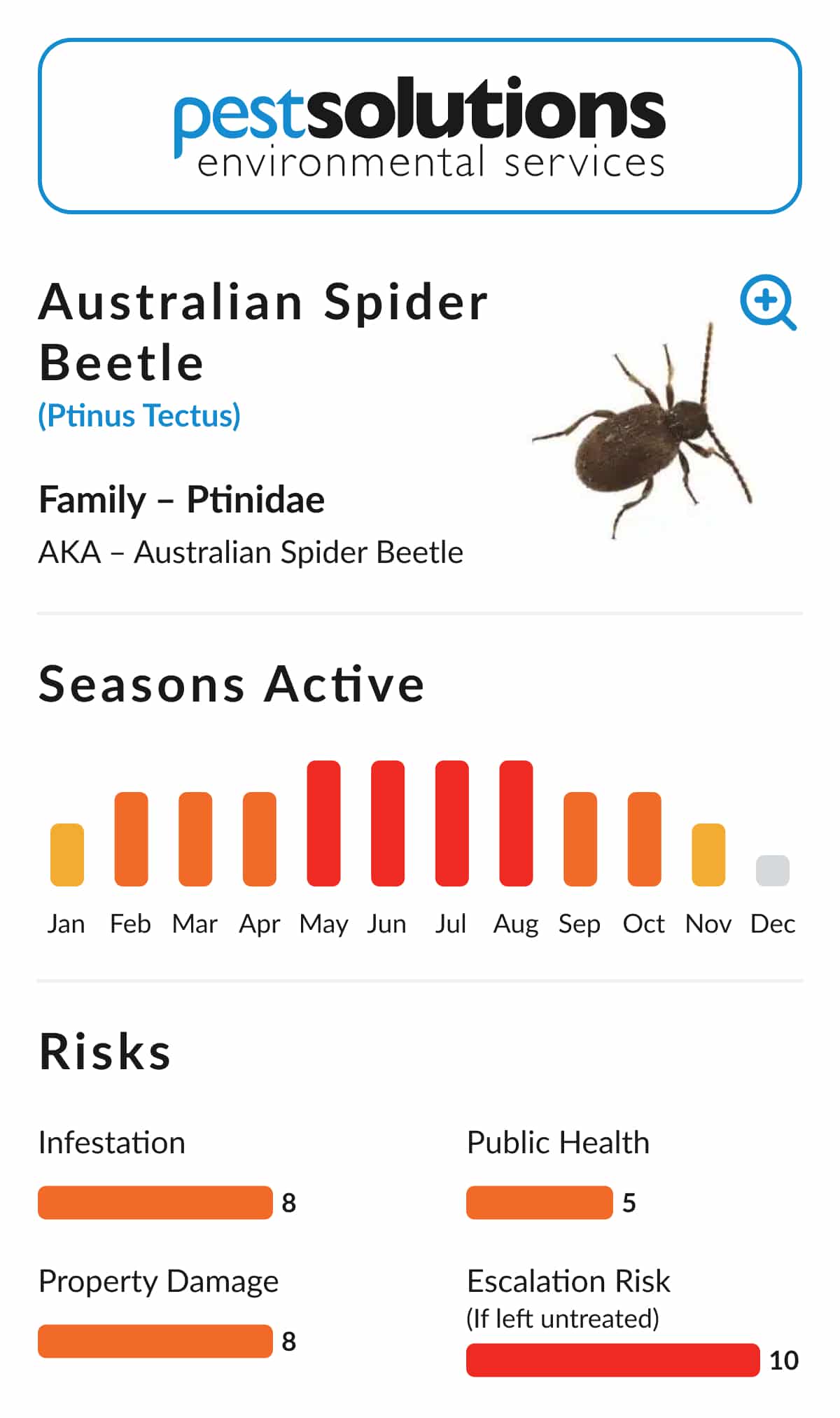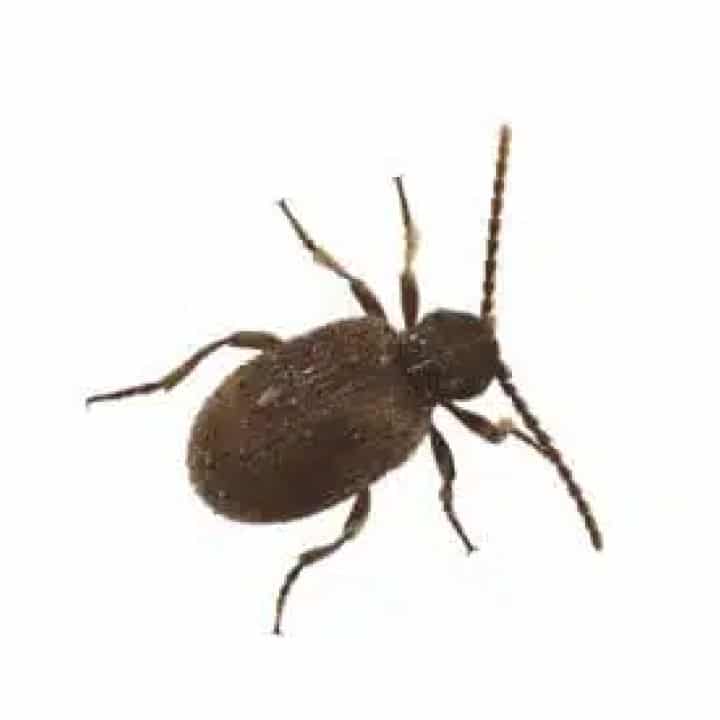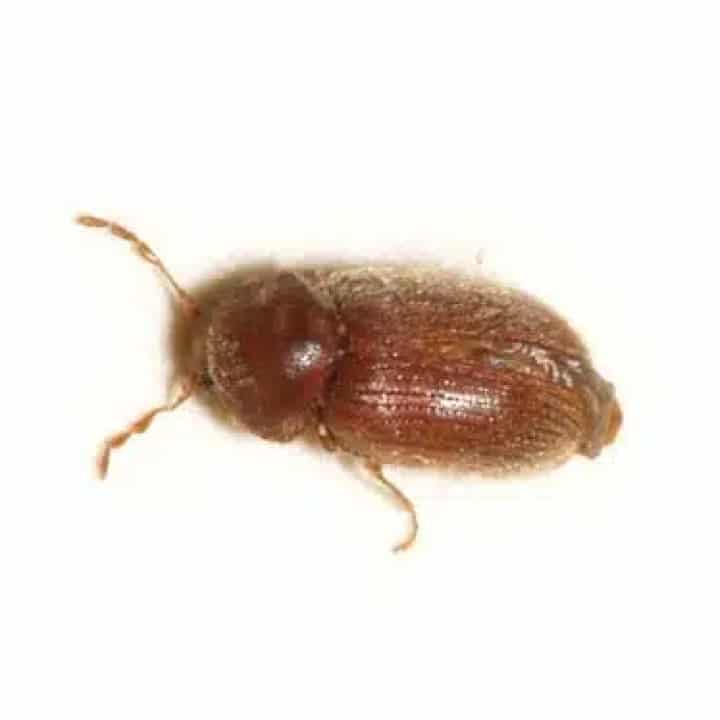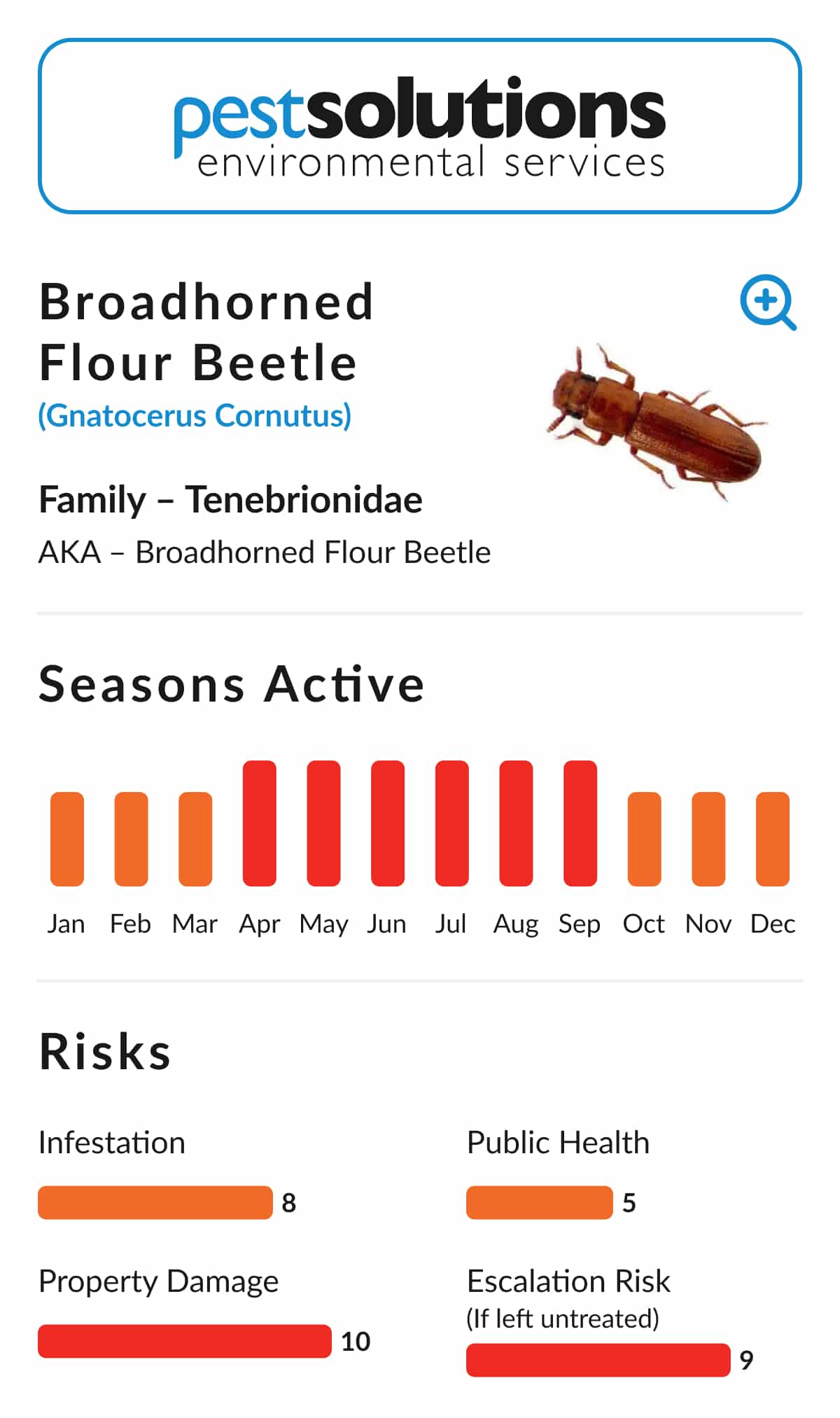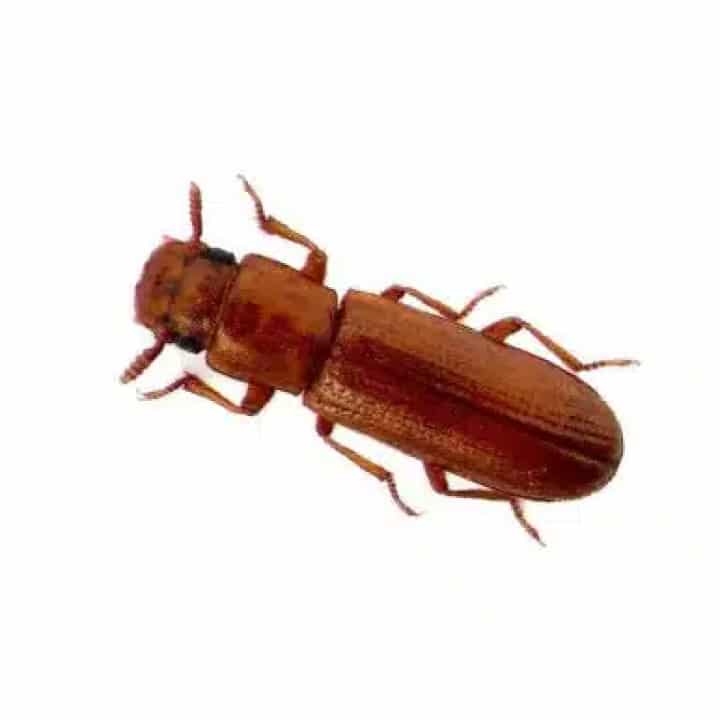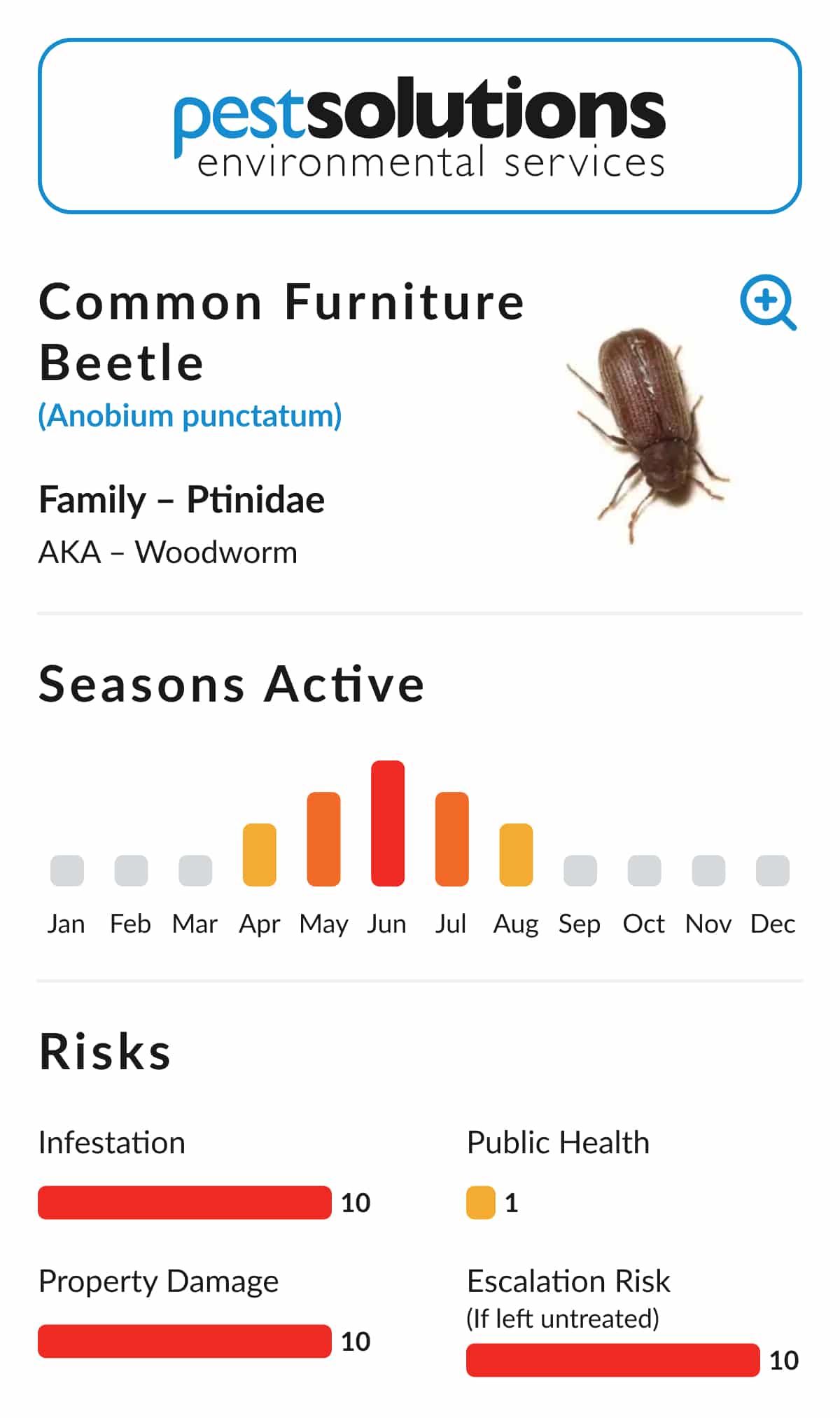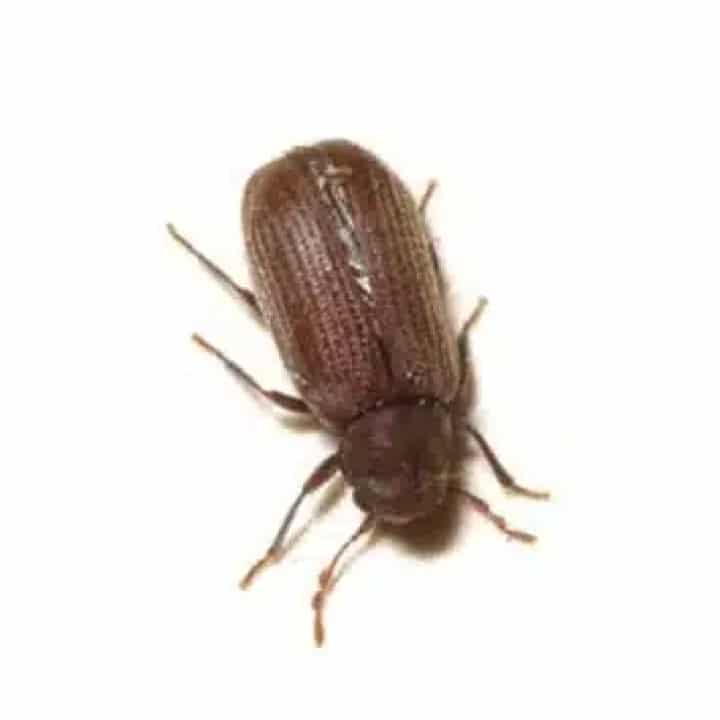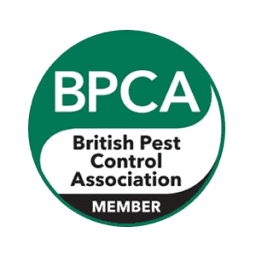Identification – Drugstore Beetle (Stegobium paniceum)
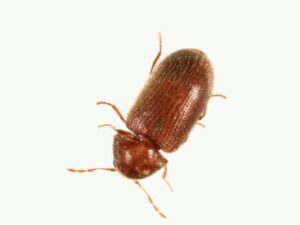
clubbed antennae. Although small, they are easily recognised by their uniform colouring and cylindrical shape. Adults can live for several months.
The life cycle of the Drugstore Beetle includes four stages: egg, larva, pupa, and adult.
- Eggs are laid freely among food sources and hatch within 1–2 weeks.
- Larvae are the most destructive stage, feeding on a wide range of dried goods. They remain active for 2–6 months depending on temperature.
- Pupation occurs within the food material and lasts for 1–2 weeks.
- Adults emerge and may continue to infest other materials, though they do not feed extensively.
Habitat and Distribution – Drugstore Beetle (Stegobium paniceum)
The Drugstore Beetle is found throughout Europe and the UK and is considered a global pest. It is especially common in locations where dried goods are stored, such as food cupboards, pantries, kitchens, warehouses, and manufacturing sites.
Its ability to chew through packaging materials such as paper, cardboard, and even some plastics enables it to reach and infest previously sealed products. This makes detection and prevention particularly challenging in storage and retail environments.
Why They’re a Problem – Drugstore Beetle (Stegobium paniceum)
Drugstore Beetle larvae feed on a wide variety of materials, especially:
- Spices
- Cereals
- Dried fruit
- Other stored food items
They are also known to infest some non-food materials, including books and upholstered furniture. Their chewing behaviour can result in serious product spoilage and waste, particularly in spice stores and cereal packaging areas. Once an infestation takes hold, the beetles can contaminate large amounts of product and spread throughout premises via packaging breaches.
Control and Prevention – Drugstore Beetle (Stegobium paniceum)
Effective control of Drugstore Beetles relies on a combination of sanitation, monitoring, and targeted treatment.
Recommended actions include:
- Removing and safely disposing of infested food
- Conducting thorough cleaning to eliminate food residues
- Applying residual insecticide sprays or dusts in cracks, crevices, and known harbourage points
- Using pheromone traps to monitor adult activity
- Maintaining good stock rotation and hygiene in storage areas
In commercial settings, professional fumigation may be necessary to eliminate widespread infestations. Prevention through good hygiene and inspection practices is essential to avoid reinfestation.
Professional Support – Drugstore Beetle (Stegobium paniceum)
If you’re dealing with a Drugstore Beetle problem in your home or business, Pest Solutions can help. Our expert technicians offer discreet, effective treatment plans tailored to food safety and pest control standards.
Visit https://www.pestsolutions.co.uk to learn more or to book a professional inspection.
